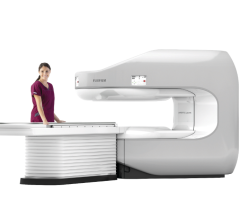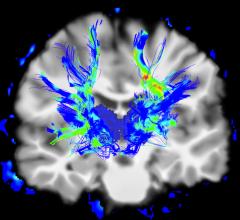
November 13, 2015 — SST Group Inc. announced it will be demonstrating RDM (Radiation Dosage Monitor) for the first time at the 2015 Radiological Society of North America (RSNA) conference, Nov. 29-Dec. 4 in Chicago.
RDM is designed to collect, control, analyze and optimize radiation doses delivered to patients during medical imaging and interventional examinations. It utilizes a dose archive and communication system (DACS) to store and manage radiation dose data for patient current and historical procedures and includes all captured diagnostic, interventional and image-guided surgical ionizing events. The RDM acquires, stores and analyzes data directly from the modality to present a more accurate dose estimate. Thanks to its intuitive browser-based user interface, medical professionals gain complete control of the dose with instant access to a patient's dose history and real-time monitoring and alerts.
RDM fits seamlessly into the medical facility's infrastructure/imaging network and is compatible with the various types of imaging modalities from all manufacturers. Nice Hospital implemented the solution in 2014. Hospital personnel, Gyslaine Bruneton, IT hospital engineer, and Alain Fuchs, medical physicist, said, "The integration of RDM in our IT infrastructure was accomplished simply and according to strategic deadlines. Today, via a user-friendly interface, we have a simple way of monitoring and preventing possible overexposures. The traceability of dose received by our patients has been simplified, and the dose reports inserted into the patient file provide an accurate record. By making technical data from interventional radiology exams accessible, the RDM solution enables medical physicists to estimate a patient's skin dose exposure more accurately."
Cecile Salvat, medical physicist, at Hopital Lariboisiere (AP-HP) in Paris, France said, "Thanks to its appropriate tools, RDM meets the requirements of French legislation perfectly and greatly facilitates the mission of medical physicists in imaging. Its user-friendly interface allows you to track and enhance the reliability of radiation dose exposure data in order to establish targeted corrective actions, as necessary. RDM tracks high-risk patient exposure simply and efficiently. Thanks to the technical data collected by RDM, skin dose calculation in interventional radiology procedures for therapeutic use is now possible, including data from modalities more than 10 years old. This software helps bridge the gap between all participants in patient radiation safety, in order to optimize dose which is a long journey of continuous improvement teamwork."
For more information: www.sstgroup-inc.com


 July 30, 2024
July 30, 2024 








